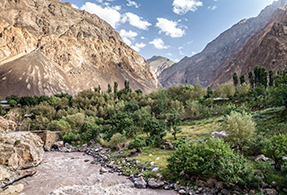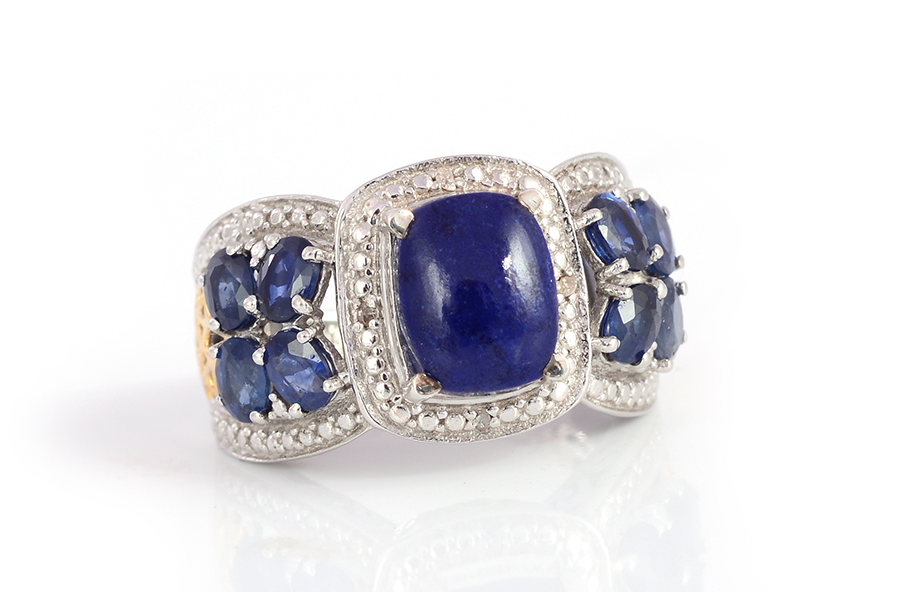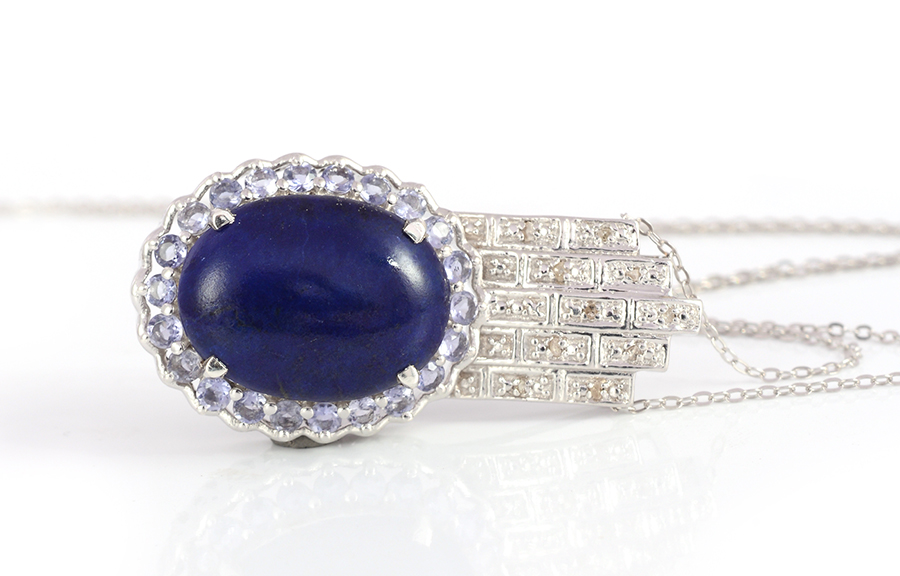Lapis Lazuli
Few gemstones equal the extensive and passionate history of lapis lazuli. Although found in many locations throughout the world, the Badakhshan province of northern Afghanistan offers the finest quality.
Lapis is from the Latin word for "stone," and the names lazuli or lazurite derive from the Persian "lazhuward" and Latin "lazulum," which both mean blue or heaven. The full name "lapis lazuli" is often shortened to lapis. Historically, this gemstone was among the first used to create jewelry. The stone displays vibrant blues and intense shades of sapphire, with a deep and glowing depth - not shiny. Lapis lazuli has a varying composition made up of 25 to 40 percent lazurite, plus several other minerals (sodalite, hauyne, calcite, and pyrite) that influence the color and its distribution.
- In Ancient Egypt, the dead were buried with lapis lazuli jewelry and other embellishments to shield them in the afterlife.
- During excavations in the Mediterranean, archaeologists frequently find graves furnished in ornamental chains and figures made of lapis lazuli. Thousands of years ago, these deep blue stones were often favored by the people of Mesopotamia, Egypt, Persia, Greece and Rome.
- The Greeks and Romans called this gemstone sapphirus, meaning blue, and used it as a reward for bravery, much like a blue ribbon symbolizes first place in competition today. Romans believed the gemstone could also work as a powerful aphrodisiac. The gemstone was used for inlay work of jewelry, amulets and talismans.
- When first introduced to Europe, Lapis was known as ultramarinum, which means "beyond the sea." Artists crushed lapis into a powder and mixed it with oils to produce the pigment ultramarine. This was replaced with a synthetic process in 1828, but the original lapis pigmentation can be seen in the paintings of the Renaissance period.
- Arabic geographer Istakhri recorded a visit to the Afghanistan lapis mines during the 10th century, and Marco Polo visited and wrote about them in 1271.
- According to folklore, if you dream of lapis the person you love will be true to you forever.
LOCATION: Afghanistan
One of the finest sources for lapis lazuli is the Sar-e-Sang deposit in Afghanistan's remote Badakhshan district. This mine is one of the oldest in the world and has been producing continuously for more than 7,000 years. While other deposits of lapis are known, none outshine the quality of stone from the Afghan mine.
This remarkable gemstone can also be found in Chile, where the material is frequently heavily mottled with calcite. Small amounts are also mined in Colorado, near Lake Baikal in Siberia, and in Myanmar's Mogok Stone Tract. Gemstones from the Sar-e-Sang deposits are considered rare and valuable.

- Ranks 5 to 6 on the Mohs hardness scale
- Color displays an intense deep sapphire blue, lightly dusted with flecks of golden pyrite.
- Sourced from the Sar-e-Sang mine in Afghanistan.
- Lapis lazuli is considered a rock, not a mineral.
- Also known as lapis, Chilean lapis and denim lapis.
- The color may be improved through light heating and dyeing.





